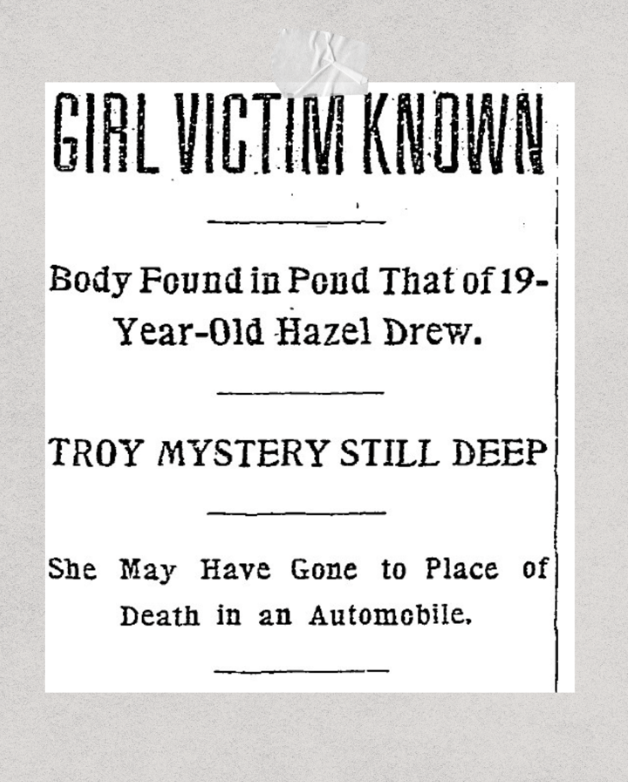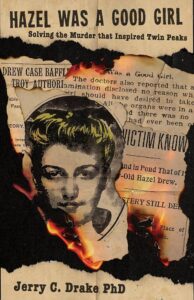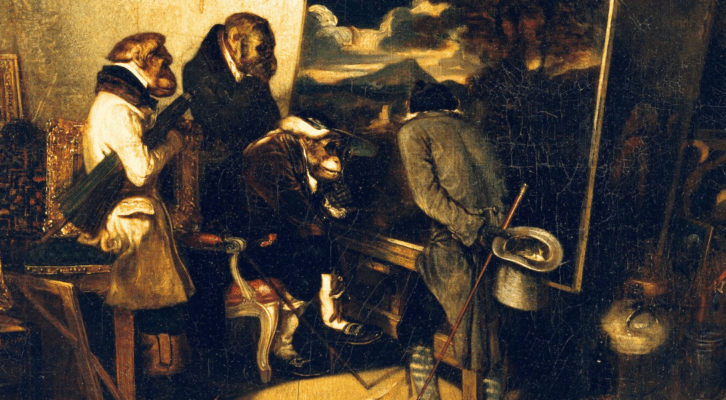I don’t believe in ghosts, but I’ve seen a ghost and her name is Hazel Drew.
In the sweltering summer of 1908, during a late-night rendezvous in a remote wooded spot near the industrial city of Troy, New York, someone killed Hazel Irene Drew, tossing her body into a farmer’s mill pond, where it was found a few days later. Hazel’s death was a national story of interest for the month of July 1908, with newspapers as far away as the Kaiser’s Germany filling their front pages with rumors of jilted jealous lovers, prostitution, pregnancy, and scandal.
Then, nothing.
By the end of July, the whole thing was over. The local authorities failed to name a killer and Hazel faded into obscurity until about eighty years later, when the tragedy of her death inspired the creation of a cult television series. David Lynch’s Twin Peaks (1990-1991) was co-written by Mark Frost, whose grandmother lived near where Hazel was murdered and where, according to her, Hazel’s ghost still haunted the Upstate New York woods.
The parallels between Hazel Drew and the fictional character she inspired, Laura Palmer, are clear. Unlike Laura Palmer, there was no Agent Dale Cooper on the scene to unravel Hazel Drew’s death and to this day that murder remains unsolved.
The investigators at the time never developed any serious suspects (at least publicly) and interest in Hazel, despite the compelling mystery surrounding her death, has never taken hold in the “true crime community.” There are podcast episodes here and there, and two other books have been written about her. We mainly know about Hazel today because of her connection to Twin Peaks.
Though I was a fan of the show growing up, I never had any idea it was inspired by real events. In a bizarre plot twist, I was drawn to the tale in much the same manner as Agent Cooper: through a dream. When I sat down to write this book it took me about a year to put that sentence on paper because it’s never been my intention in life to be anything other than a hard-nosed skeptic.
To admit that Hazel Irene Drew came into my life in a fucking dream took some courage. Maybe I got obsessed, maybe I went a little crazy. Then again, maybe ghosts are real, and Hazel Drew is still out there trying to get her story told. You decide.
Let’s rewind to the final months of 2019, before COVID drove the whole damn world mad. My friend announced to me that she and her husband were buying a house and planning to move themselves and their publishing business to the town of Troy, New York, an old Upstate industrial city on the Hudson. I was excited for this — it brought them closer. Also, I like the Albany region and was looking forward to having an excuse to spend more time exploring there.
We planned to meet up after my birthday once they had settled in the new place so that I could help with some crafty projects. Then came the dreams. My friend dreamed that a strange woman appeared in a room of her future house and offered her a book. It was turquoise in color, the title read: The Absence of Memory. She told me of this dream and we puzzled over its significance but found nothing that made sense in dream symbolism terminology.
A few days later as I was sick in bed, shivering with fever in my DC condo, I fell into a heavy sleep and encountered this book myself. In my dream I opened the book, a hardback, and saw that the first blank page contained a bookplate that read: Ex Libris Hazel I. Drew. Ex Libris is Latin for “from the library of” and was a common moniker on bookplates a century ago.
I slept for a few more hours and woke sweating from sickness. I took a shower and made some tea. Still intrigued by the dream I searched for “Hazel I. Drew” online. The first article to come up was from Find A Grave. I read Hazel’s entry, which laid out in a few paragraphs what I have come to call the Legend of her life and death:
“More than a century ago, the body of 20-year-old Hazel Drew was found floating in Teal’s Pond near the bottom of Taborton Mountain in Sand Lake, New York. An autopsy found that she’d died of blunt head trauma to the back of her head prior to ending up in the pond. Her death was labeled a murder…
…In the end, all the leads the investigators had run out. Nobody was ever arrested or charged with the murder, and to this day – Hazel Drew’s murder remains unsolved!
Article continues after advertisementHazel Drew was one of several children of John and Julia A. (Taylor) Drew. Her known siblings were Joseph, who was 2 years older than her, Carrie, who was 7 years younger, William who was 10 years younger, Emma who was 11 years younger, Emery who was 12 years younger but predeceased her, and Thomas who was 13 years younger, who also predeceased her.” [1]
 Washington Post, July 14, 1908. The case was already being covered in the Washington Post by the time Hazel Drew’s body was identified. It became a major national news story in the summer of 1908.
Washington Post, July 14, 1908. The case was already being covered in the Washington Post by the time Hazel Drew’s body was identified. It became a major national news story in the summer of 1908.
On my initial reading the only thing that really jumped out at me was the fact that Hazel’s murder had taken place in New York State, where my friend was moving. I had never heard of Sand Lake and had no idea where it was.
I stumbled across a recent YouTube video on the subject of Hazel’s death. By midnight, still exhausted from illness, I had watched every video I could find and listened to every podcast on the subject up to that time. I found websites belonging to a handful of people interested in her murder. I had found all the stray news and magazine articles related to her death and the ghoulish “Halloween” stories from the New York papers recycling the story of Hazel’s killing for a lurid thrill. Among these stories were many references to the disclosure by authors David Bushman and Mark Givens that Mark Frost, the co-creator of Twin Peaks, had heard stories of Hazel Drew from his grandmother Betty Calhoun, while spending time at her home near Sand Lake. Hazel’s ghost allegedly haunted the woods around Teal’s Pond, the site of her murder.[2]
I wondered, why wasn’t Hazel’s killing more famous?
The irony is that in 1908 Hazel’s death was a sensation. Every major American paper reported on Hazel Drew — whether reprinting wire service reports or actually sending reporters to Troy to cover the story. What emerged from that reportage and its regurgitation over the subsequent century is a settled narrative — The Legend of Hazel Drew.
However, as it turns out, the Legend isn’t actually true. It’s simple, it’s elegant, and it ends with a satisfying mystery around which to speculate. Much of the tale was fictionalized by the tabloid press. Having reached that conclusion, I decided I would try my own hand at exploring Hazel’s life and death. I felt justified, especially if her ghost had summoned us in a dream. That alone was befitting the murder that inspired Twin Peaks!
___________________________________
[1] Find a Grave (https://www.findagrave.com/memorial/36451324/hazel-irene-drew).
[2] “The Real Life Murder that Inspired the Show Twin Peaks: Hazel Irene Drew,” Gabulosis, October 22, 2019, https://youtu.be/A31T_s38sow
[3] Bushman, David and Givens, Mark. “Hazel’s Brutal Murder Was All But Forgotten…Until She Inspired Twin Peaks.” The Washington Post, May 11, 2017.


















